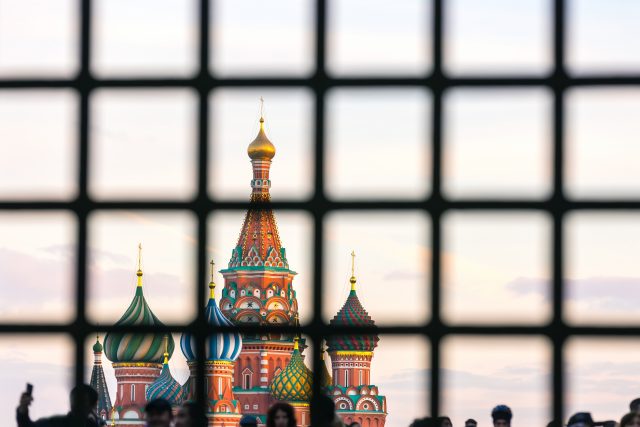このウェブサイトでは、お客様に最高のユーザー体験を提供できるよう、クッキーを使用しています。クッキーの情報は、お客様のブラウザに保存され、お客様が当ウェブサイトに再度訪問された際に、お客様を認識したり、お客様が当ウェブサイトのどのセクションを最も興味深く、有用であると感じるかを当チームが理解するのに役立つなどの機能を果たします。
ロシアの飲料産業は生き残れるのか?
ウクライナ戦争が始まって以来、ロシアの飲料業界は深刻な問題に直面している。ユージン・ゲルデンがレポートする。

2022年2月24日以前、ロシアの飲料部門はロシアの食品・飲料市場全体の中で最も急成長している部門のひとつであり、市場カテゴリーによっては年間成長率が15%に達するものもあった。
しかし、ロシアとウクライナの戦争が始まったことで、少なくともこれまでと同じペースで産業が成長する望みは絶たれた。
生産者にとって最もネガティブなニュースは、EUの第5次制裁措置の結果、ロシアの飲料、主に蒸留酒の欧米市場への輸出が禁止されたことだ。多くの企業は近年、EUや英国、さらには米国市場への供給を大幅に増やしていた。
ロシアの生産者によれば、一部の供給はまだ継続されているが、制裁の圧力が強まるにつれて、供給も停止される可能性が高いという。
禁止事項
さらに、ロシア企業のかつてのパートナーであった欧米企業の中には、ロシアの非認可の飲料メーカーに対しても、独自の企業禁止措置を開始するところもある。
ロシア有数の蒸留酒製造・輸出業者であるアルコール・シベリア・グループのセルゲイ・レベデフ・ゼネラル・ディレクターは、同社は最悪のシナリオ、すなわち欧米市場への納入の全面禁止に備えていると述べた。
セルゲイ・レベデフは言う:「一般的に、輸出は国内市場での販売よりも収益性が高い。さらに、特にプレミアム・セグメントでは、ブランド・イメージの構築にも役立ちます。
「平均以上の所得を持つ消費者が適切に陳列された商品を目にすることができるからだ。
世界市場
ウクライナ戦争以前、EU市場はドイツとバルト三国で大きな販売量を誇っていた。また、イギリス、アメリカ、フランスも重要な販売市場だった。
現在の規制により、ほとんどの生産者はアジアやラテンアメリカの代替市場への供給に切り替えているが、現地顧客の蒸留酒消費量は欧米の消費量を大幅に下回っており、調達価格も低くなっている。
専門家によると、飲料メーカーは輸出の落ち込みを国内市場への供給増で補いたいと考えているが、国内でも深刻な問題を抱えている。
ローン
現在、ロシアの飲料メーカーの大半にとって、高額の融資は最大の問題のひとつである。これは、業界の債務負担が伝統的に高いことに加え、ロシア中央銀行による最近の基軸金利の急激な引き上げによるものである。
また、最近のロシア中央銀行による主要金利の急激な引き上げにも起因している。
この2年間で、すでに2倍から2.5倍に膨れ上がっている。
また、その生産に使われるパッケージやその他の部品が不足していることも、状況を複雑にしている。パッケージやラベルの場合、そのほとんどは従来からフィンランドから輸入されていた。
フィンランドから輸入されていた。
ロシアの一部の生産者は中国からの供給に切り替えることができたが、ここ数週間、中国の大手銀行が制裁問題のために、中国のサプライヤーから人民元建てでこれらの製品を購入するための取引を拒否したため、深刻な問題に直面している。
例えば、2月7日、ロシアの飲料メーカーや輸出業者向けのメインバンクである浙江長州商業銀行は、取引停止を発表した。
価格上昇
制裁と輸出制限による損失を補うため、ロシアの大手飲料メーカーはすでに製品の値上げを余儀なくされている。
経済省のデータによると、昨年は市場カテゴリーによって20%から50%の幅で価格が上昇したが、今年も上昇を続けている。
このことは、ロシアの独立系飲料部門アナリストも認めている。今年に入ってから、ほとんどの飲料の価格は着実に上昇しているが、その理由のひとつに、物品税の増加、製造コストと物流の増大がある。
ロシアの分析機関Gradusの専門家は、2024年全体でも、カテゴリーにもよるが、価格の伸びは20%から50%になると見ている。
これまでのところ、メーカーはすでにロシアの小売業者に値上げを通知している。同時に、値上げによってロシアでの飲料の売上が激減することはなく、むしろ消費者は主に国内産の代替ブランドや格安ブランドに切り替えるだろうと考えるアナリストもいる。
主要生産者
ディアジオ、LVMH、ペルノ・リカールなどの大手メーカーが、主に欧米諸国からロシアへの飲料輸出を大規模に停止した。
その他の小規模生産者については、ロシアへの供給を続けているところもあり、価格は300ユーロに達する。
同時にアメリカは、価格に関係なくロシアへの蒸留酒の公的供給をすべて停止した。
ウォッカはロシアで最も人気のある強いアルコール飲料で、蒸留酒の売上の39%を占め、最も人気のあるボトルのサイズは定番のハーフリッターである。
ウイスキー
欧米の制裁はロシアのウォッカ市場に大きな悪影響を与えなかったが、ウイスキーの状況はもっと悪い。
ロシアのワイン商社フォートの責任者アレクサンダー・リピリンは、ロシア『コメルサント』紙のインタビューで、ロシアのウイスキー部門は70%減少し、なかでも中価格帯の落ち込みが大きかったと語っている。
これは、アイルランド、スコットランド、アメリカの生産者の大半が市場から撤退したためである。
ロシアへの高級酒や蒸留酒の供給は、並行輸入やその他の半合法的なスキームを通じて行われているが、そうした製品の価格は通常、実際の市場価格の数倍になっている。
しかし、専門家によれば、これらの飲料のほとんどは、モスクワやサンクトペテルブルグのHORECAセグメントや高級レストランでうまく販売されているという。
コニャック
一方、ウイスキーとは対照的に、コニャック部門の状況ははるかに良好で、これはアルメニアのサプライヤーが主力ブランドであるアララットで高いシェアを占めているためでもある。
特に、ラテンアメリカ諸国やキューバからのラム酒の供給増が期待されている。
国内生産に関しては、これまでのところ、ロシアの大手飲料メーカーや流通業者が生産品目を拡大する計画を発表している。

